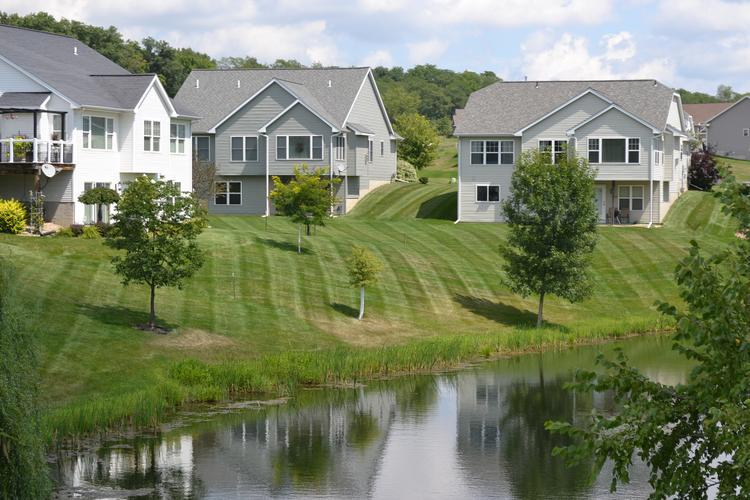1. Assess Your Lawn
Rewilding your lawn involves transforming it from a manicured space into a more natural and ecologically diverse habitat. Here are the steps to get started:
- Understand Your Local Ecosystem: Research the native plant species that are naturally found in your area. Identify the soil type, moisture levels, and sunlight conditions that are prevalent in your region. This will help you select appropriate native plants and understand the needs of the local wildlife.
- Evaluate Your Lawn’s Condition: Assess the current state of your lawn. Consider the grass species, the presence of weeds, and any potential issues such as compacted soil or poor drainage. This evaluation will guide you in determining the necessary steps to rewild your lawn.
- Identify Areas for Change: Determine which areas of your lawn you want to transform into natural habitats. This could include creating wildflower meadows, planting native trees and shrubs, or leaving sections of the lawn unmowed to encourage the growth of native grasses and wildflowers.

2. Remove Non-Native Species
Removing non-native species is an essential step in rewilding your lawn. Non-native plants often outcompete native species and provide little to no value to local wildlife. Follow these guidelines:
- Identify Non-Native Species: Learn to recognize non-native plants in your lawn. Common examples include dandelions, clover, and certain types of grasses. Refer to local resources or consult with experts to identify non-native species specific to your region.
- Remove Non-Native Plants: Use environmentally friendly methods to remove non-native plants. This can include hand-pulling, digging, or using natural herbicides. Be sure to follow the recommended guidelines for each removal method to minimize any negative impact on the environment.
- Replace with Native Species: After removing non-native plants, replace them with native species that are suitable for your local ecosystem. Choose a variety of plants that provide food and shelter for wildlife, including nectar-rich flowers, host plants for butterflies, and plants with berries or seeds.

3. Create Habitat Features
Introducing habitat features will attract a wide range of wildlife to your rewilded lawn. Consider the following:
- Install Bird Feeders and Nest Boxes: Place bird feeders and nest boxes in strategic locations to provide food and nesting sites for birds. Research the specific needs of different bird species in your area and provide suitable feeders and boxes accordingly.
- Add Water Sources: Include a water source, such as a birdbath or small pond, to attract birds, insects, and other wildlife. Ensure the water is fresh and clean and consider adding rocks or shallow areas to accommodate different species.
- Build Insect Habitats: Construct insect habitats, such as log piles, rock piles, or insect hotels, to provide shelter for beneficial insects like pollinators and pest controllers. These habitats can be made from natural materials found in your local environment.
- Create Wildlife-Friendly Zones: Designate specific areas of your lawn for wildlife by leaving them undisturbed. Allow grasses and wildflowers to grow naturally, providing food and shelter for insects, birds, and small mammals.

4. Adjust Lawn Maintenance Practices
To rewild your lawn successfully, it’s important to adjust your lawn maintenance practices. Here’s what you can do:
- Mow Less Frequently: Reduce the frequency of mowing to allow grasses and wildflowers to grow taller. This provides habitat and food sources for insects and small mammals. Consider mowing only once or twice a year or leaving certain areas unmowed altogether.
- Leave Grass Clippings: Instead of collecting and disposing of grass clippings, leave them on the lawn. Grass clippings act as a natural fertilizer, returning nutrients to the soil and promoting healthy growth.
- Use Organic Fertilizers: If necessary, apply organic fertilizers to provide nutrients for the native plants. Avoid synthetic fertilizersas they can harm the environment and disrupt the natural balance.
- Minimize Water Usage: Native plants are adapted to local rainfall patterns, so they generally require less water once established. Reduce or eliminate the use of irrigation systems and let nature take care of watering your rewilded lawn.
- Control Weeds Naturally: Instead of relying on herbicides, manage weeds naturally. Use mulch to suppress weed growth, manually remove weeds when necessary, and encourage the growth of dense native plants to outcompete weeds.

5. Observe and Enjoy the Rewards
Once you have rewilded your lawn, take the time to observe and enjoy the rewards of your efforts. Here’s what you can look forward to:
- Increased Biodiversity: By rewilding your lawn, you create a diverse ecosystem that supports a wide range of plant and animal species. You may notice an increase in butterflies, bees, birds, and other wildlife visiting your garden.
- Beautiful Natural Landscapes: A rewilded lawn can be just as aesthetically pleasing as a traditional manicured lawn, if not more so. The vibrant colors of native wildflowers and the natural movements of wildlife can create a picturesque and ever-changing landscape.
- Reduced Maintenance: Rewilded lawns generally require less maintenance compared to traditional lawns. With a balanced ecosystem in place, nature takes care of many tasks such as pest control and nutrient cycling.
- Environmental Benefits: Rewilding your lawn contributes to important environmental benefits, such as improved soil health, enhanced water infiltration, and reduced reliance on synthetic fertilizers and pesticides.

By following these steps, you can transform your lawn into a thriving and biodiverse habitat. Embrace the beauty of nature and make a positive impact on the environment through rewilding.




